The battling Dutch cruisers
The three cruisers of the Java class were started in 1916-17 to replace older units in the Dutch Navy squadron. The class counted the HLMNS Java, Sumatra and Celebes, but construction of the third was delayed and finally was abandoned in 1919, resources being focused on the remaining two. They were eventually completed in 1923, and entered service in 1924. Already these ships were of an obsolete design with their single masked artillery positions of 6-in mounts, but both were fitted with a catapult to launch Fairey IIID seaplanes.
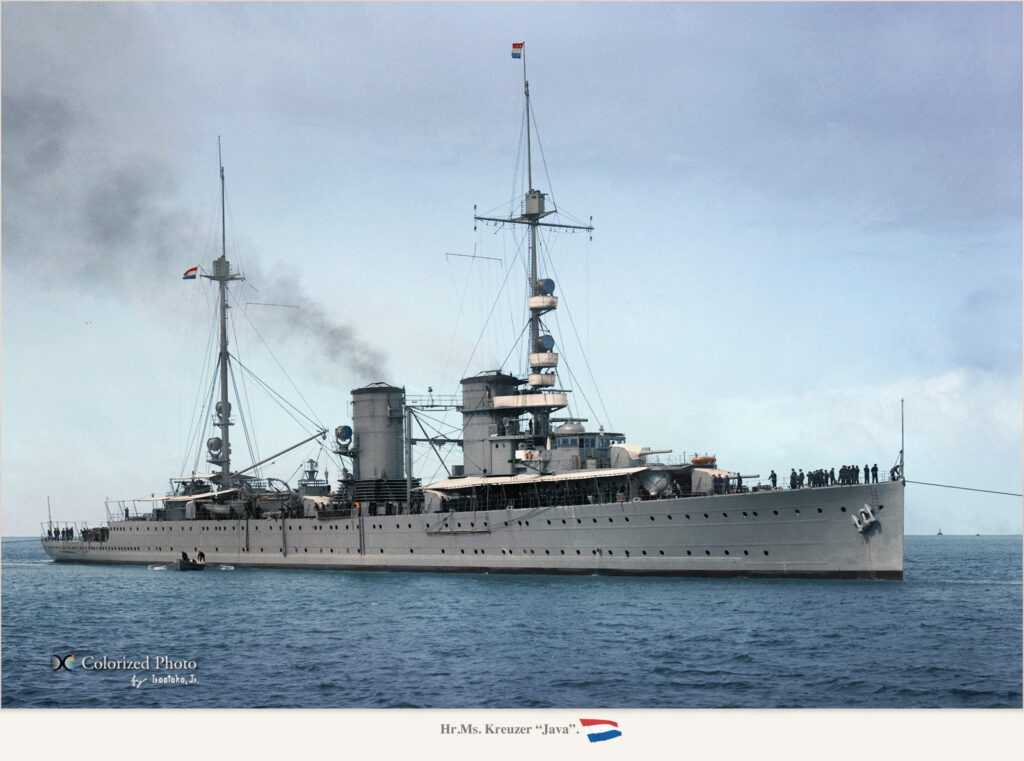
Superb colorization by hirootoko Jr (monocrome specter) of HnLMs Java in the east indies, date unknown.
In 1934-35 both cruisers were modernized at home, fitted with a modern fire system with, in a new armored tower on the German model. Six to eight 40 mm AA Bofors replaced the old “13 pounders” on the decks. In 1940 HDMNS Sumatra took refuge in France and later fled to Britain. She was eventually scuttled as an artificial breakwater on D-Day, but her sister ship HDMNS Java faced the Japanese alone after the loss of the cruiser De Ruyter and the ABDA squadron. She was sunk in February 28, 1942 by Haguro and Nachi after an harrowing, legendary duel.
Development of the Java class
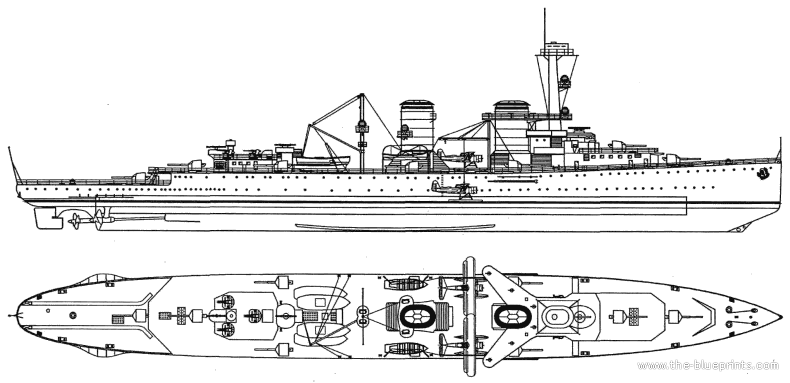
Blueprint of the class, showing the entire hull and deck view.
Designed in 1913, built in the Schelde naval shipyards, these three cruisers were named after Dutch famous islands in the East Indies. The concept was to replace the existing Dutch cruisers in service at the eve of the Great War, namely the four ageing Holland class ships (1896-98) which formed the bulk of the east Indies fleet, coastal battleships being preferred to maintain the safety of home waters. However we have to look also at the broader scope: At the end of the 19th century indeed, Japan emerged politically and economically, developing at lightning speed. The IJN in particular, unsignificant in 1890, left the battle of Yalu victorious in 1894 and was considerably reinforced. This came with unveile ambitions and this caused some concerns in the Dutch East Indies. In 1902, it became a conviction that Japan was about to risk an attack on the Dutch colony, the only question was when.
The Netherlands in addition was forced to face this prospect all by itself, since Japan and Great Britain signed a cooperation agreement and the Royal Navy started to retire the RN ships back to the home fleet. In 1913 therefore, plans were made for a rapid, drastic extension of the fleet. Originally the admiralty expected no less than nine battleships, 6 cruisers and dozens of destroyers, most of which were due to the East Indies.
In 1915, over submission, the German Krupp Germaniawerf company came up with a proposal looking like a scaled-down Moltke class battlecruiser.
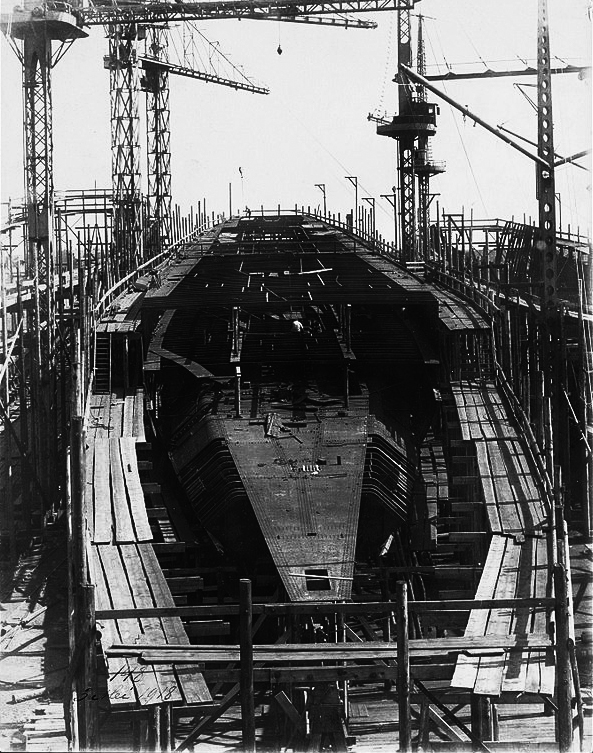
Primary armament was to be ten 150 mm guns on a displacement of 6670 tons.
A design was elaborated, looking towards the latest German cruisers of the time. The armament of ten 6-in guns was adopted as an answer to the Japanese Tenryū class light cruisers. The rest were workarounds to have a ship fast enough to compete. The plans prepared by Krupp Germaniawerft and approved were very modern when ordered and almost an overkill, with a straight stern and tandem guns forward and aft, plus torpedo banks.
Design of the Java and Sumatra
A superficial look clearly shows some german influence, in particular with the design of the funnels, compartimentation, armament location and type, powerplant architecture, and target control military masts. In size and tonnage, they looked similar enlarged German Graudenz class cruisers, displacing 6670 tons standard and 8087 tons fully loaded, for a lenght of 155.3 m (509 ft 6 in)
a beam of 16 m (52 ft 6 in), and a draught of 6.22 m (20 ft 5 in); In 1916 when they were laid down, they were closer to the Cöln class, 7500 tons fully loaded and capable of 27.5 knots.
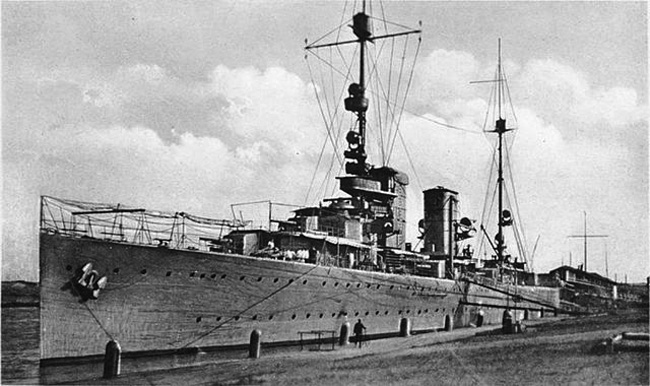
Powerplant
Java and Sumatra however were much faster thanks to a powerful machinery for the time: The HrMS Java drive consisted of three Curtis-Parsons-AEG steam turbines. They were driven by eight oil-fired boilers, for a total output of 53,637kW, enabling a top speed of 30 knots. The range was still 7725 kilometers at 12 knots. The three-blade propellers had a diameter of 4.1 meters.
On the HrMs Sumatra, three Zoelly steam turbines were planed, fed by eight oil-fired boilers, connected to the propellers not by direct drive but via reduction gearboxes, which made another difference. Total output was 60,250kW, enough for 31 knots, and a range of 8050 kilometers at 12 knots. This different drive was the result of a replacement as her initial machinery was entirely destroyed by fire in a supplier’s warehouse and later will cause many operational problems in service.

HrMs Sumatra – Flickr, Joost.J.Bakker at IJmuiden
In the end, these were replaced by three Parsons geared steam turbines, fed by eight Schultz-Thornycroft boilers, mated on three shafts. Total output was still 73,000 shp (54,000 kW), for a top speed of 31 knots, as much as a destroyer. This top speed match was to match the Japanese cruisers as much as for their “pocket battlecruiser” initial concept. Indeed 31 knots for a cruiser was impressive in 1916, but no longer ten years after: The British County class were capable of 32 knots, 33 for the Enterprise class, but the earlier Hawkins 31 knots. The German KMS Emden was slower at 29 knots but used diesels for a better range. Indeed the latter was able to cover 6,700 nmi at 15 knots, versus 4,340 nmi (8,040 km; 4,990 mi) at 11-12 knots for the Java class. However, armament-wise, the Java had the advantage of two more guns.
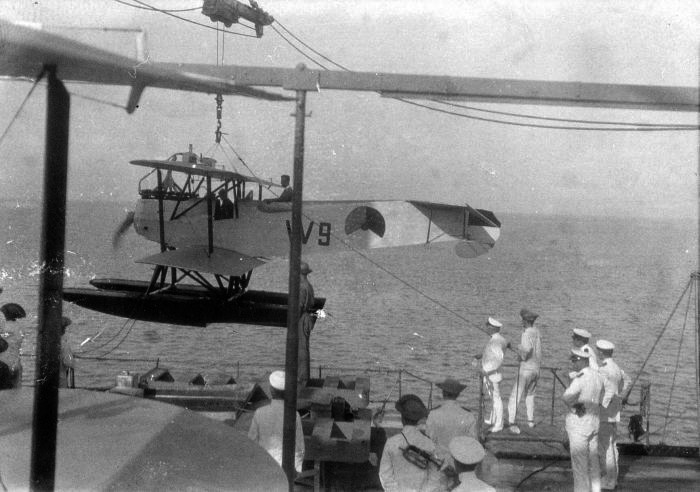
Armament
Given the ship’s size, ten guns seemed right. This was clearly a superior artillery compared to the Japanese Tenryu, however it stayed ahead of the following classes, of the Kuma (7 x 140 mm guns), Nagara and Sendai, and was still a match for the early Aoba class (six slower 8 in guns). This primary armament of ten 150 mm guns was placed in superfiring positions fore and aft rather than in tandem, with the other six placed amidhsips, a pair abeft the rear superstructure, two abaft the aft funnel and two abaft the main funnel. The secondary armament consisted of four 3-in (75 mm) guns. While anti-aircraft armament comprised six single 40 mm Bofors guns and six .50 Browning machine guns. The ships also carried depht charges and two Fokker C-11W seaplanes for reconnaissance. It was a solid package for long range missions in autonomy.
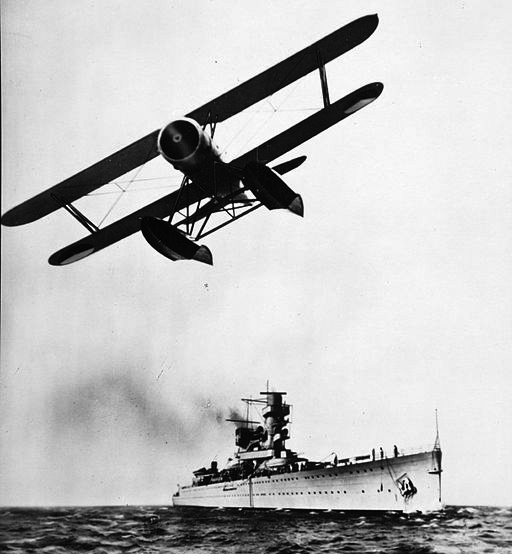
Protection
This consisted in relatively light armour overall, only 75 mm (3.0 in) for the belt, 25-50 mm (2.0 in) for the decks and 125 mm (4.9 in) for the conning tower. In addition the guns were covered by 100 mm (3.9 in) armored shields. A torpedo could have made short work of the ships, which despite some internal compartimentation had no dedicated ASW protection. Speed and agility were a possible answer, but 8-in shells would have no difficulty in penetrating the decks.
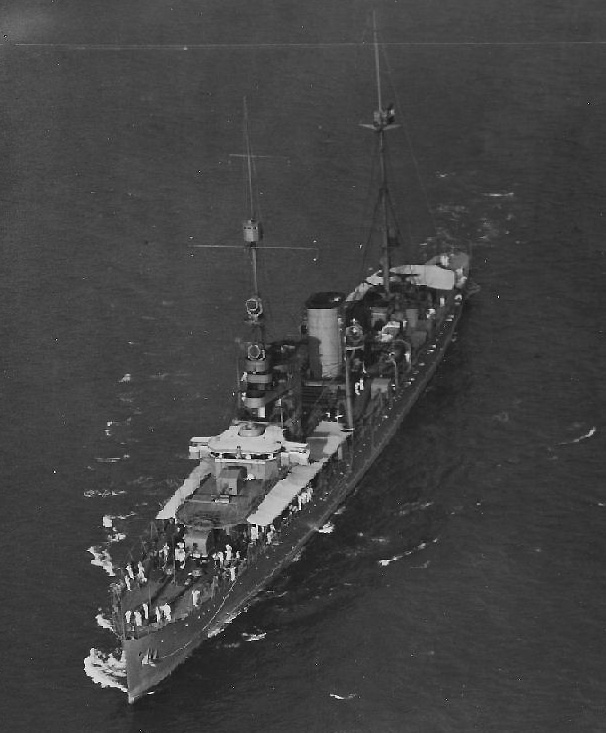
Construction
The Java was laid down at Koninklijke Maatschappij de Schelde, Flushing, on 31 May 1916. Sumatra was started at Nederlandse Scheepsbouw Maatschappij, Amsterdam on 15 July of the same year, and Celebes at Wilton-Fijenoord, Schiedam, laid down on 14 June 1917.
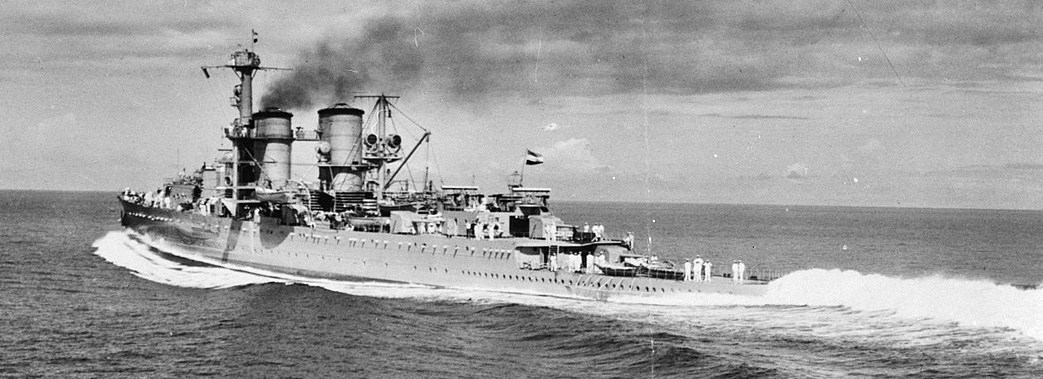
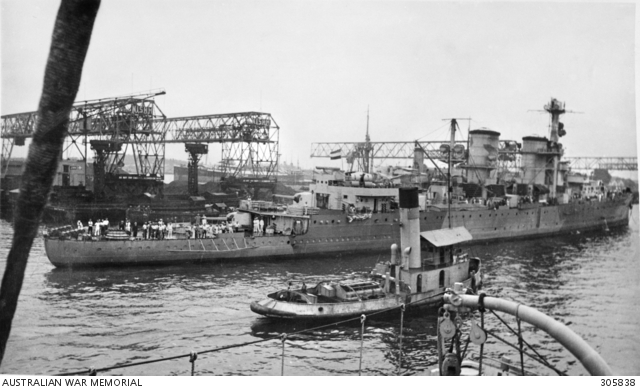
The First World War however caused these works to stall and eventually to stop completely. Construction resumed after the war, although a strong pacifist atmosphere weighted on the debates. As a result, the House of Representatives and population in general declared against any fleet expansion program. The battleships planned were canceled, as well as the three other cruisers, but since but the keel of three Java class cruisers had already been laid down, it was later decided that two of the most advanced would be completed.
Design obsolescence was already a concern in 1919, but in addition their hull has been left to rot for years, a fire at the company that supplied the propulsion of HrMs Sumatra ruined the powerplant. The introduction of the 8-hour working day, strikes and lack of foreign building materials, compounded by economic depression also all delayed the ship’s completion. Because of this, they entered service very late, making them obsolete even before commission: Sumatra was launched first, 29 December 1920, but was the last to be completed, on 26 May 1926, and Java one year before, despite her launch on 6 August 1921.
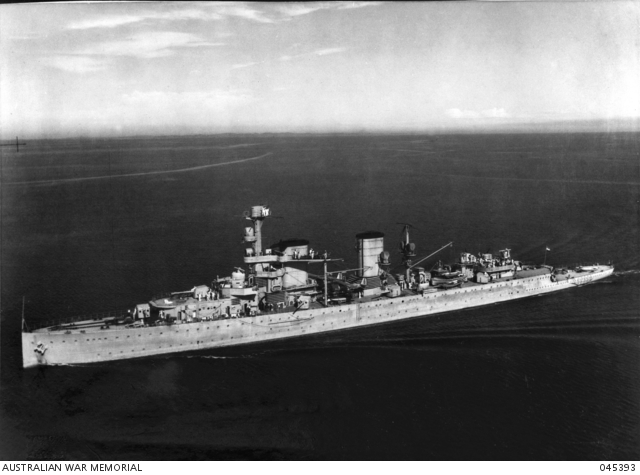
HrMs Java in 1942, Australian War Memorial
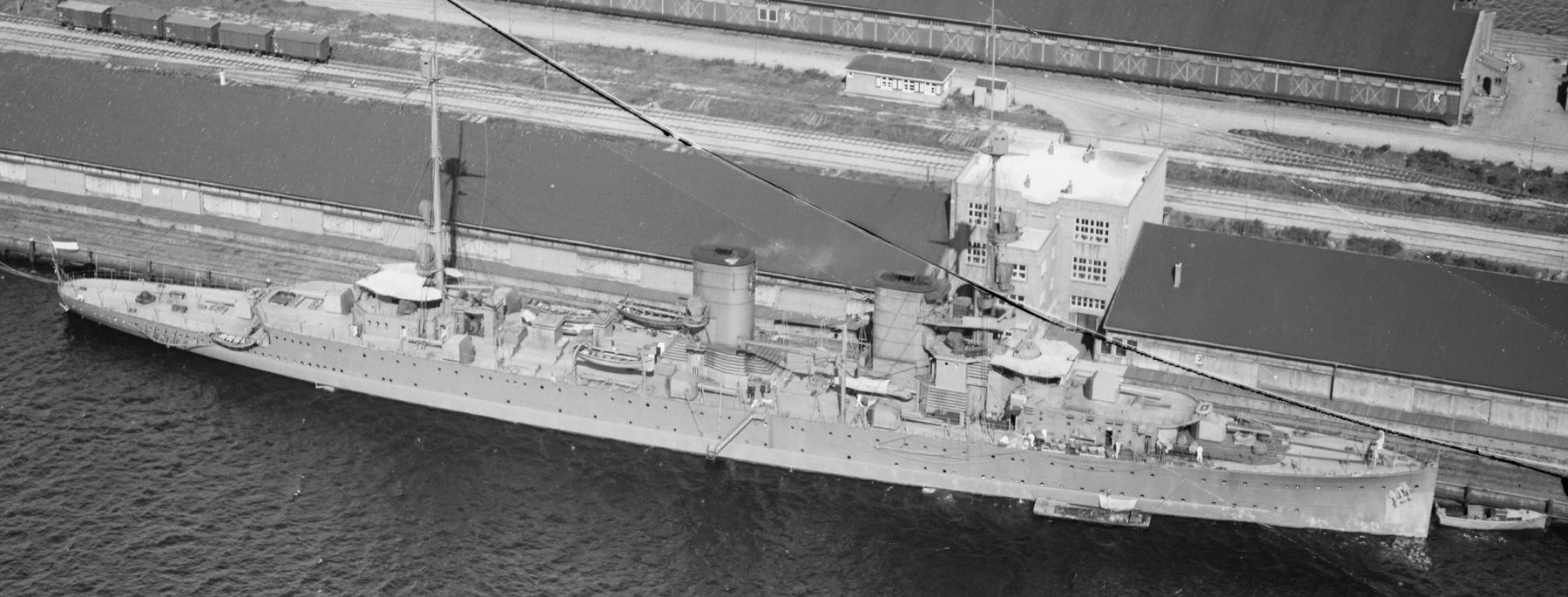
The Java class in actions
HrMs Java
She emerged from the Koninklijke Maatschappij de Schelde in Flushing on 6 August 1921, before fitting out and be commissioned on 1 May 1925. On 14 October she left the Netherlands for her first trip to her intended station in the Dutch East Indies. She arrived in Tanjung Priok on 7 December.
On 29 July 1929, Java escorted by destroyers De Ruyter and Evertsen, submarines K II and K VII left Surabaya for Tanjung Priok (North Jakarta, later Indonesia). She was greeted by the royal yacht of the King of Siam (Maha Chakri) escorted by destroyer Phra Ruang in official visit. Together with the Java, the squadron visited Bangka, Belitung, Riau, Lingga Islands, Belawan and Deli. On 28 August they returned to Tanjung Priok.
On 31 August Java participated in a fleet review at Tanjung Priok in honor of the Dutch Queen Wilhelmina in company of the destroyers De Ruyter and Evertsen.
On 23 August 1936, Java and Sumatra escorted by the destroyers Van Galen, Witte de With and Piet Hein joined the fleet days in Surabaya. On 13 November the same squadron made a courtesy fleet visit to Singapore, practising gunnery training and manoeuvres in the South China Sea on their way.
Java returned to the Netherlands, through Suez and Gibraltar. From there, she protected a convoy during the Spanish Civil War in April-May 1937.
After seven months of refit at home, she returned to the East Indies on 4 May 1938, making convoy escort on her way down to the strait of Gibraltar 10-13 May. She arrived in Tanjung Priok on 25 June 1938. On 13 October unfortunately, she collided with Piet Hein in the Sunda Strait and was sent Surabaya for repairs.
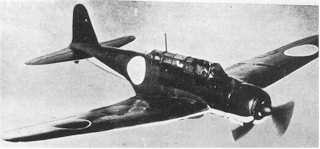 After the war broke up, the ship guarded the East Indies, making exercises and patrolling home waters. In December 1941, Japan was found at war with the US and soon threatened the Dutch and British possessions. She performed convoy duties with the British Navy and on 15 February 1942, her squadron was attacked by Japanese Navy B5N “Kate” bombers from IJN Ryūjō. She received little to no damage due to near-misses.
After the war broke up, the ship guarded the East Indies, making exercises and patrolling home waters. In December 1941, Japan was found at war with the US and soon threatened the Dutch and British possessions. She performed convoy duties with the British Navy and on 15 February 1942, her squadron was attacked by Japanese Navy B5N “Kate” bombers from IJN Ryūjō. She received little to no damage due to near-misses.
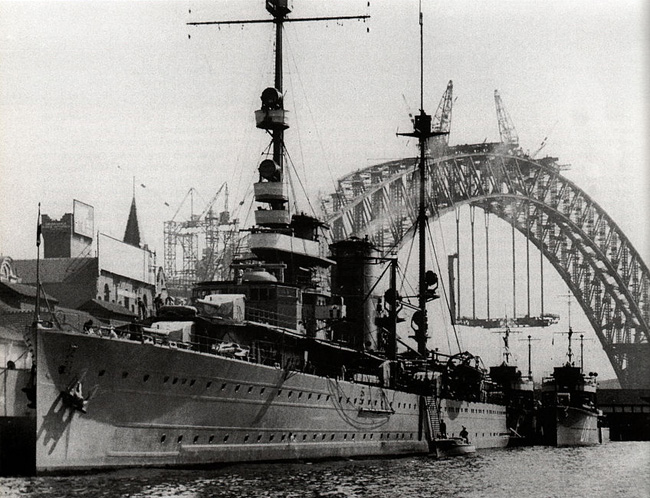
On 19 February, the reinforced multinational squadron ABDA sailed to Bali, attempting to disrupt Japanese landings. Java took part in the Battle of Bandung Strait. A gunnery exchange with the Japanese followed, but Java was left unharmed. The Japanese later captured Bali and badly damaged the cruiser Tromp and a destroyer, sinking the Piet Hein.
On 27 February 1942, HNLMS Java was present at the Battle of the Java Sea. In the evening she was hit by a Japanese Long Lance torpedo fired from IJN Nachi. This exploded inside the aft magazine, ripping off the stern off the ship. Massive flooding started in the aft engine room while the anti-aircraft deck was engulfed by flames. Java suddenly took a heavy list to port, and the electrical equipment shut down. Deprived of any means to save her, the captain ordered to abandoned ship.
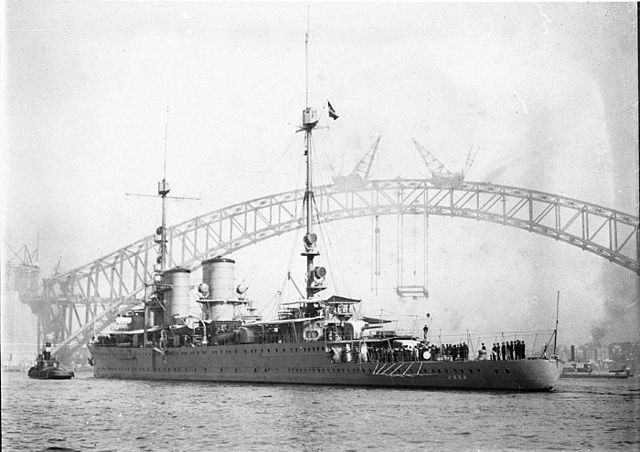
HNLMS Java sank in about fifteen, carrying with her 512 of her crew. Some were killed in the impact, others were trapped inside, and others escaped only to drawn, as only a few were rescued. It is odd to consider a ship named after the battle in which she was sunk. Nothing has survived. The same battle saw also the loss of HNLMS De Ruyter, sank by the same devastating torpedo attack. Admiral Karel Doorman, the head of ABDA went down with his ship. Only 111 were saved from both ships.
The wreck of Java was discovered by a specialist diving expedition on 1 December 2002. The ship was laying on her starboard side at 69 metres (226 ft) depth. De Ruyter’s wreck was also discovered the same day, as HNLMS Kortenaer, in August 2004.
The controversy came when the Dutch Ministry of defence reported on 15 November 2016 the disappearance of the three wrecks. An investigation was launched, in order to discover a possible illegal salvage. In February 2017 a report confirmed it. This created a scandal as all three ships were registered as national memorials. It is possible also that clandestine operation was approved higher up to clean out the busy lanes in these waters.
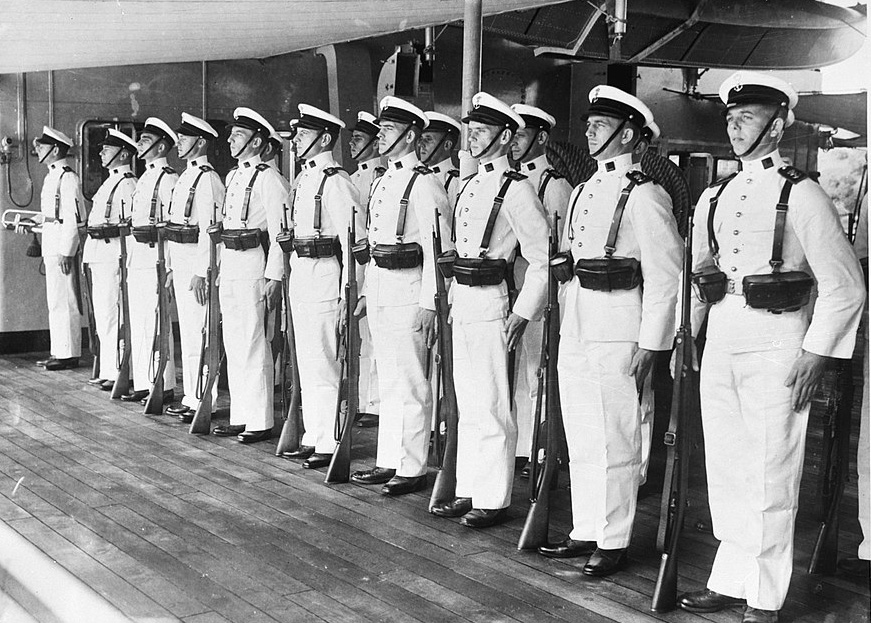
HrMs Sumatra

HlMNS Sumatra in Bombay, circa 1942 (cropped). This is one of the very rare photos showing the ship’s camouflage. There is another dark band in between the two large “chunks” coverinf the first half and stern, but also a lighter color at the stern, while the foward funnel had a triangular pattern and the aft one was entirely painted in the dark tone. There has been conjecture about the color, although model kit manufacturers such as Pacific crossroads and Niko models seems to favor the dark green theme, which made sense with the numerous islands of the East Indies. Src
Sumatra was launched by the Nederlandsche Scheepsbouw Maatschappij in Amsterdam, on 29 December 1920, and inaugurated by Queen Wilhelmina of the Netherlands. The intended turbines however were destroyed by fire on 31 May 1922 at Werkspoor (Amsterdam). After fitting replacements, the ship was commissioned on 26 May 1926. On 21 September left the Netherlands for the Dutch East Indies, sailing via New York City, the Panama Canal, San Francisco, Shanghai and Nagasaki. On 19 February 1927 she stayed Shanghai, amidst rising tensions between Nationalists and Communists, evacuating civilians after in-fighting broke out. A landing party of 140 men went into the business quarter to cover the evacuation. Sumatra returned to Surabaya in the Dutch East Indies.
On 18 June 1930, Sumatra came through an extensive refit at Surabaya after a damaged turbine and returned there after a fire in the boiler room during speed trials, towed by the ship Krakatau. Bad luck went on, as Sumatra was stranded on an uncharted reef near Kebatoe on 14 May 1931. Three days later she was towed away by two ships, and then to Surabaya for further repairs. Until mid-1935 she was modernized at Surabaya, loosing the old 75 mm AA, replaced by six 40 mm Bofors AA.
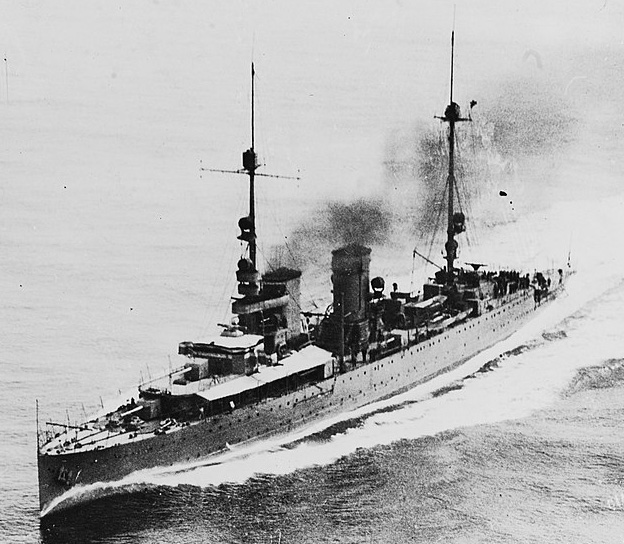
On 16 November 1935, HrMs Sumatra, Van Galen and Witte visited Saigon and the next year joined Java and the destroyers Van Galen, Witte de With and Piet Hein at Surabaya. HrMs Evertsen joined the squadron which visited Singapore in November 1936, making gunnery exercises in the China sea.
On 8 June 1938 she departed for the Netherlands and started escorting convoy during the Spanish Civil War via Gibraltar. She returned home for a short refit at Den Helder and participated in Scheveningen’s review held in honor of Queen Wilhelmina 40 years of reign.
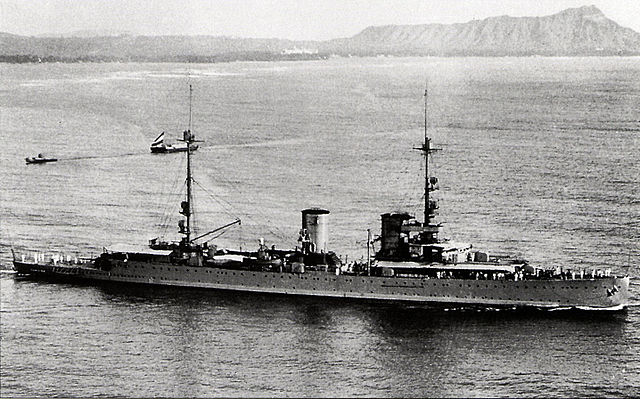
HrMs Sumatra off Pearl Harbor in 1927
As the Netherlands were overrun by the German Army during May 1940, Sumatra left the Netherlands for England. After having a degaussing cable installed to protect her from magnetic mines, she proceeded to Milford Haven. Princess Juliana of the Netherlands and her daughters were taken aboard there and transported to Halifax, Canada. Afterwards she performed convoy escort duties and took part in the search for the German commerce raider Widder.
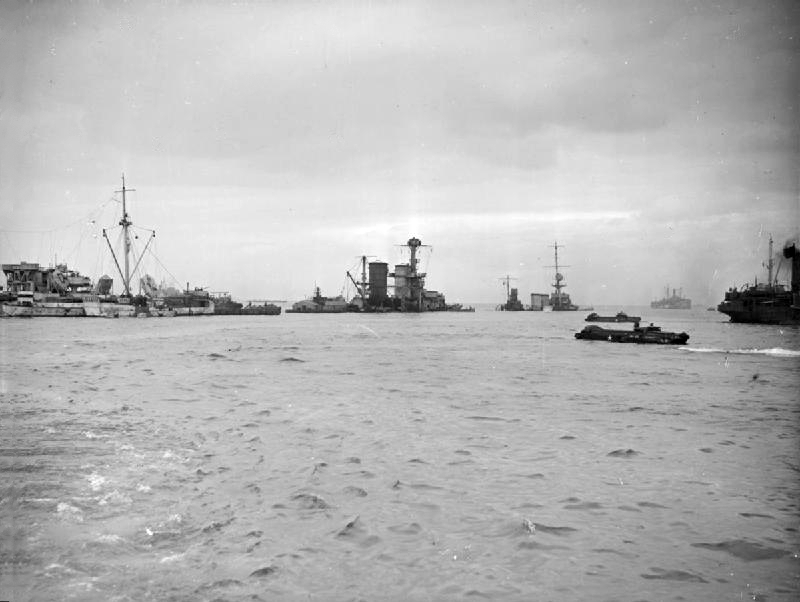
During the fall of 1940, HrMs Sumatra returned to the Dutch East Indies for an extensive overhaul, not completed in January 1942 when war broke out with Japan. Sumatra was recommissioned and sailed to Ceylon with midshipmen at 15 knots. In 1941 she was in Great Britain at Portsmouth to try to solve her propulsion problems. The diagnostic was the ship was not able to perform her duty and necessitated extensive replacement of her powerplant.
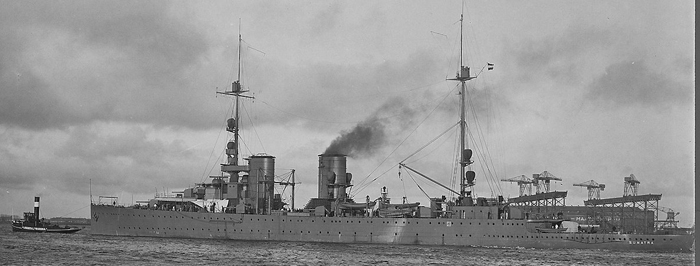
In the end, a meeting between the refugee Dutch admiralty and British Royal Navy estimated the ship needed to be mothballed due to other priorities. The crew joined the Free Dutch Navy. After a while, Sumatra was towed off the coast of Normandy on 9 June 1944 at Ouistreham. She became a part of a gooseberry pier, protecting an artificial Mulberry Harbour (Operation Overlord). Her 150 mm guns went into the Flores-class gunboats instead. On 14 February 1951 Sumatra’s wreck was auctioned to be scrapped.
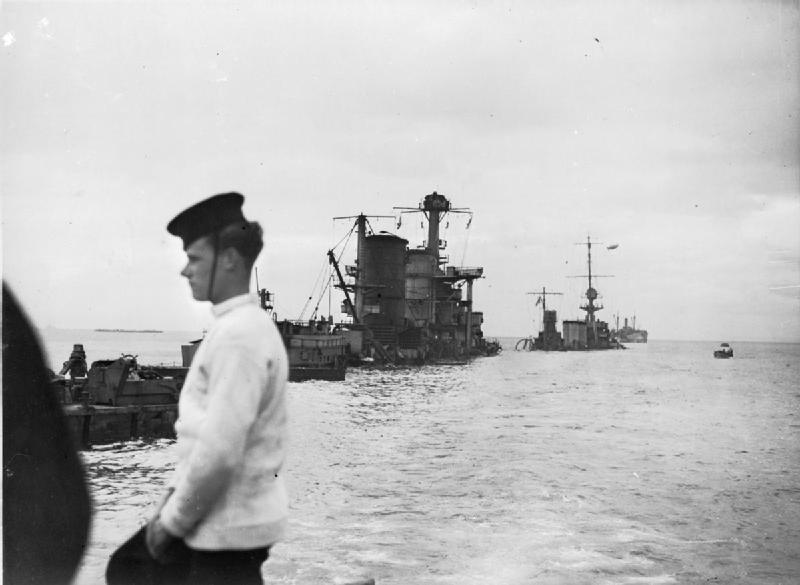
Specifications of the Java class
Displacement: 6670 tons standard, 8087 tons full load
Dimensions: 155.3 m x 16 m x 6.22 m (509 ft 6 in x 52 ft 6 in x 20 ft 5 in)
Propulsion: 2 shaft turbines, 6 oil-fired boilers (see notes), 46,000 hp. and 30-31 knots.
Armour: Deck: 25-50 mm, belt: 75 mm, CT: 125 mm, Gun masks: 100 mm
Crew: 435
Armament: 10 x 150 mm, 8 x 40 mm AA, 8 x 12.7 mm AA MGs, 1 Fokker C.XI seaplane (see notes).
Read More
Conway’s all the world’s fighting ships 1906-1921 & 1922-1947
Teitler, G. (1984). De strijd om de slagkruisers. Dieren: De Bataafsche Leeuw.
Anten, J. (2001). Hr. Ms. Kruisers ‘Java’ en ‘Sumatra’. Zierikzee: Asia Maior
van Dijk, Anthonie (1989). The Drawingboard Battleships for the Royal Netherlands Navy. Part II
//en.wikipedia.org/wiki/Java-class_cruiser
//www.netherlandsnavy.nl/Javacl.htm
//www.navypedia.org/ships/netherlands/nl_cr_java.htm
//www.world-war.co.uk/dutch/java.php3
//marineschepen.nl/dossiers/waarom-we-de-javazee-niet-moeten-vergeten.html
//www.netherlandsnavy.nl/Javacl.htm
//www.tracesofwar.nl/articles/1924/Lichte-kruisers-van-de-Java-klasse.htm?c=gw
Kimenai, Peter (February 6, 2010)
On modelshipworld.com
Models Corner:
1/700 Niko Model of the Java on scalemates.com
Pacific – 1/350 Resin Java
Video of the kit’s mounting and full review
Kit review on steelnavy.net
shapeways.com 1/250 Java 3D printing
Additional Pictures:
https://commons.wikimedia.org/wiki/Category:Hr.Ms._Java_(ship,_1925)
https://commons.wikimedia.org/wiki/Category:Hr.Ms._Sumatra_(ship,_1926)
https://laststandonzombieisland.com/tag/dutch-cruiser/

The HLMNS Java shortly before the battle of the same name in February 1942. It seems Sumatra was painted the same way, but with one additional band and the aft funnel painted dark. Exact colors are foggy, rather dark grey or green than blue..





 Latest Facebook Entry -
Latest Facebook Entry -  X(Tweeter) Naval Encyclopedia's deck archive
X(Tweeter) Naval Encyclopedia's deck archive Instagram (@navalencyc)
Instagram (@navalencyc)





 French Navy
French Navy Royal Navy
Royal Navy Russian Navy
Russian Navy Armada Espanola
Armada Espanola Austrian Navy
Austrian Navy K.u.K. Kriegsmarine
K.u.K. Kriegsmarine Dansk Marine
Dansk Marine Nautiko Hellenon
Nautiko Hellenon Koninklije Marine 1870
Koninklije Marine 1870 Marinha do Brasil
Marinha do Brasil Osmanlı Donanması
Osmanlı Donanması Marina Do Peru
Marina Do Peru Marinha do Portugal
Marinha do Portugal Regia Marina 1870
Regia Marina 1870 Nihhon Kaigun 1870
Nihhon Kaigun 1870 Preußische Marine 1870
Preußische Marine 1870 Russkiy Flot 1870
Russkiy Flot 1870 Svenska marinen
Svenska marinen Søværnet
Søværnet Union Navy
Union Navy Confederate Navy
Confederate Navy Armada de Argentina
Armada de Argentina Imperial Chinese Navy
Imperial Chinese Navy Marinha do Portugal
Marinha do Portugal Mexico
Mexico Kaiserliche Marine
Kaiserliche Marine 1898 US Navy
1898 US Navy Sovietskiy Flot
Sovietskiy Flot Royal Canadian Navy
Royal Canadian Navy Royal Australian Navy
Royal Australian Navy RNZN Fleet
RNZN Fleet Chinese Navy 1937
Chinese Navy 1937 Kriegsmarine
Kriegsmarine Chilean Navy
Chilean Navy Danish Navy
Danish Navy Finnish Navy
Finnish Navy Hellenic Navy
Hellenic Navy Polish Navy
Polish Navy Romanian Navy
Romanian Navy Turkish Navy
Turkish Navy Royal Yugoslav Navy
Royal Yugoslav Navy Royal Thai Navy
Royal Thai Navy Minor Navies
Minor Navies Albania
Albania Austria
Austria Belgium
Belgium Columbia
Columbia Costa Rica
Costa Rica Cuba
Cuba Czechoslovakia
Czechoslovakia Dominican Republic
Dominican Republic Haiti
Haiti Hungary
Hungary Honduras
Honduras Estonia
Estonia Iceland
Iceland Eire
Eire Equador
Equador Iran
Iran Iraq
Iraq Latvia
Latvia Liberia
Liberia Lithuania
Lithuania Mandchukuo
Mandchukuo Morocco
Morocco Nicaragua
Nicaragua Persia
Persia San Salvador
San Salvador Sarawak
Sarawak Uruguay
Uruguay Venezuela
Venezuela Zanzibar
Zanzibar Warsaw Pact Navies
Warsaw Pact Navies Bulgaria
Bulgaria Hungary
Hungary

 Bundesmarine
Bundesmarine Dutch Navy
Dutch Navy Hellenic Navy
Hellenic Navy Marina Militare
Marina Militare Yugoslav Navy
Yugoslav Navy Chinese Navy
Chinese Navy Indian Navy
Indian Navy Indonesian Navy
Indonesian Navy JMSDF
JMSDF North Korean Navy
North Korean Navy Pakistani Navy
Pakistani Navy Philippines Navy
Philippines Navy ROKN
ROKN Rep. of Singapore Navy
Rep. of Singapore Navy Taiwanese Navy
Taiwanese Navy IDF Navy
IDF Navy Saudi Navy
Saudi Navy Royal New Zealand Navy
Royal New Zealand Navy Egyptian Navy
Egyptian Navy South African Navy
South African Navy






























 Ukrainian Navy
Ukrainian Navy dbodesign
dbodesign
Hi. Looks like I know why the salvagers doesn’t care much about sunken warships.
They were Dutch ships. They belonged to colonial power that dominated Indonesian islands for hundreds of years.
So, perhaps from most Indonesians’ point of view, those ships doesn’t have any historical value. They viewed them as “bad guys’ ships” and anyone who sided with bad guys were bad guys. Note that Japanese in WW2 also considered bad guys too.
It is possible that they viewed Battle of Java sea was an event of “bad guys killing each other” and doesn’t care much about it.
I think what the allegedly illegal salvagers did was one form to show giant middle finger to the Dutch about what they did in the past.